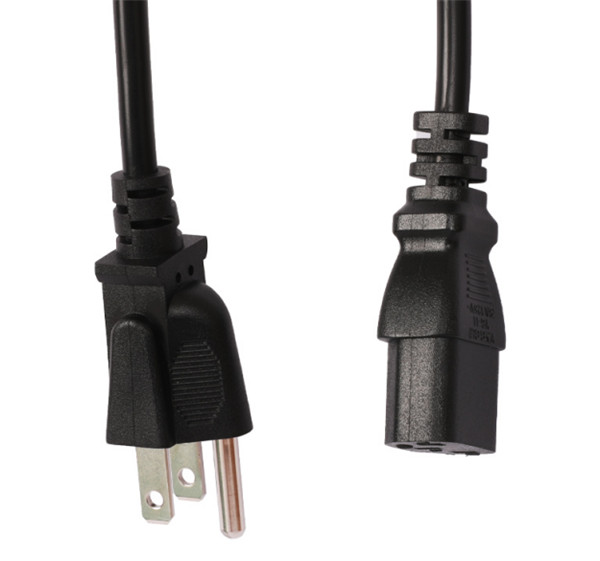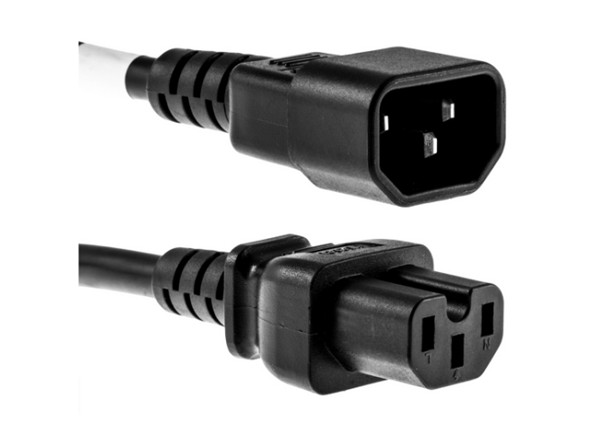4 Key Factors to Help You Differentiate Between C15 and C13 Power Cord.
Can you imagine your life without electronic appliances? No, you cannot. Neither can we because electronics have risen to form a significant portion of our life. And power cords like the C13 AC power cord give life to some of these electronic appliances. And contribute to making our life easier.
C13 AC power cord enables many different consumer electronic appliances to connect with electricity and get power. Due to multiple reasons, these adept power cords are often confused with their cousin, the C15 power cord.
The C13 and C15 power cords look similar up to a point where people new to electronics often confuse one with another.
Therefore, we are dedicating this article to sort the confusion out, once and for all. And we are presenting the standard features that set the C13 and C15 cords apart from each other.
What is the Difference Between C13 and C15 Power Cords?
The C15 and C13 power cord differ slightly in their appearance but more significantly in their application. And hence, buying a C13 cable instead of a C15 can leave your appliance disconnected from the mains because C13 cannot connect in the C15's connector.
Therefore, buying the correct power cord for your appliance is crucial if you want to continue using it and preserve its health and your safety as well.

The C15 and C13 power cords differ based on the following factors:
- Their physical appearance.
- Temperature tolerance.
- Their applications and,
- The male connector with which they connect.
These factors are just a highlight of the features that set the two power cords apart. We will discuss each of these factors in more detail below.
But first, let's see what a power cord really is and what is up with the naming convention?
What is a Power Cord?
A power cord is what its name suggests—a line or a cable that supplies power. A power cord's primary function is to connect an appliance or electronic equipment to the mains electricity socket. Doing so, it provides a channel for the current flow that can power the device.
There are different types of power cords out there. Some have one of their ends fixed into the appliance, while the other can be removed from the wall socket. The other type of cord is the detachable power cord that can be removed from the wall socket and the appliance. Like the one that charges your laptop.
The C13 and C15 power cords that we are discussing today belong to detachable power cords. These cords carry a male connector on one end, which plugs into the mains socket. A female connector determines whether the cord is C13, C15, C19, etc., and plugs into the male type of connector present inside the appliance.
The naming convention that these cords carry is set by the International Electrotechnical Commission (IEC) under the IEC-60320 standard. The IEC-60320 identifies and maintains global standards for power cords to power home appliances and all the devices that work on voltage below 250 V.
IEC uses odd numbers for its female connectors (C13, C15) and even numbers for its male connectors (C14, C16, etc). Under the IEC-60320 standard, each connecting cord has its unique connector that corresponds to its shape, power, temperature, and voltage ratings.
What is C13 AC Power Cord?
The C13 AC power cord is the center of today's article. A power cord standard is responsible for powering many home appliances. This power cord has 25 amperes and 250 V current and voltage ratings. And features a temperature tolerance of around 70 C, above which it can melt and pose a risk of fire.
The C13 AC power cord has three notches, one neutral, one hot, and one ground notch. And it connects into a C14 connector, which is its respective connector standard. The C13 cord, owing to its unique shape, cannot connect to any other connector other than C14.
You can find C13 power cords powering different consumer electronic devices like laptops, personal computers, and peripherals.
What Is C15 Power Cord?
The C15 is another IEC60320 standard that signifies power transmission for high-heat generating devices. It looks much like the C13 AC power cord in that it has three holes, one neutral, one hot, and one ground notch. Moreover, it also has a current and power rating like the C13 cord, i.e., 10A/250V. But it differs slightly in its appearance because it has a groove or a long engraved line below the ground notch.
It is a female connecting cord that fits into its male counterpart, which is the C16 connector.
This power cord is designed to transmit power to heat-generating appliances such as an electric kettle. Its unique shape allows it to fit inside its connector and accommodate thermal expansion due to the heat generated without rendering the connector useless.
The C15 and C16 connecting pair also have a variant to accommodate even higher temperatures, the IEC 15A/16A standard.
Comparing the C15 and C13 AC Power Cord
We highlighted the points that differentiate the C13 power cord from the C15 standard. Now, in this section, we will discuss these differences in a little more detail.
The Difference in Appearance
As we mentioned in the last two sections, C13 and C15 power cords differ very slightly in their appearance. That is why many people often take one for another.
The C13 standard has three notches, and its edges are smooth. On the other hand, the C15 cord also has three notches, but it has a groove right in front of the earth notch.
The purpose of this groove is to differentiate C15 and C13 cords. Moreover, because of the groove in the C15, its connector C16 has a unique shape that cannot accommodate the C13 cord, which is another reason for the groove's presence.
The groove ensures fire safety by not letting the C13 plug into the C16 connector. Because in case someone connects the two, the C13 cord, being less tolerant of the high temperature that C16 offers, would melt and become a fire hazard.
Temperature Tolerance
The C13 AC power cord cannot tolerate temperatures beyond 70 C and would melt if the temperature increased. Hence, to power high-heat devices, like electric kettles, C15 standards are used. The C15 standard has a temperature tolerance of around 120 C, which is another difference between the two cords.
Applications
As we discussed above, C13 cannot bear high temperature, so it stays restricted to low-temperature applications like computers, printers, televisions, and other similar peripherals.
The C15 power cord is made to bear high temperatures. And hence, the C15 cords are more commonly used in high-temperature applications like electric kettles, networking cupboards, etc. it is also used in Power Over Ethernet switches to power devices ethernet cables.
Connector Type
Each IEC standard has its connector type. When it comes to C13 and C15 cords, this becomes another differentiating factor.
The C13 cord connects into a C14 standard connector. At the same time, a C15 cord connects to the C16 connector.
Due to the similarity in their shapes, you may connect the C15 cord into a C14 connector. But the C16 connector will not accommodate a C13 cord due to safety reasons discussed above.
Conclusion
Being confused between a C13 AC power cord and a C15 power cord is not too uncommon, given their similar appearance. However, to ensure your device's proper function and safety, it is crucial to understand the difference between the two standards and get the right one for your appliance.
The C13 AC power cord differs from the C15 standard in that the latter has a groove elongating from its bottom-center. Moreover, the two standards have different temperature ratings and connect into different connectors.
Once you have learned to see these slight differences between the C13 and C15 standards, it won't be so hard telling one from another.
For More Information, Contact Us Today!

Post time: Jan-14-2022



